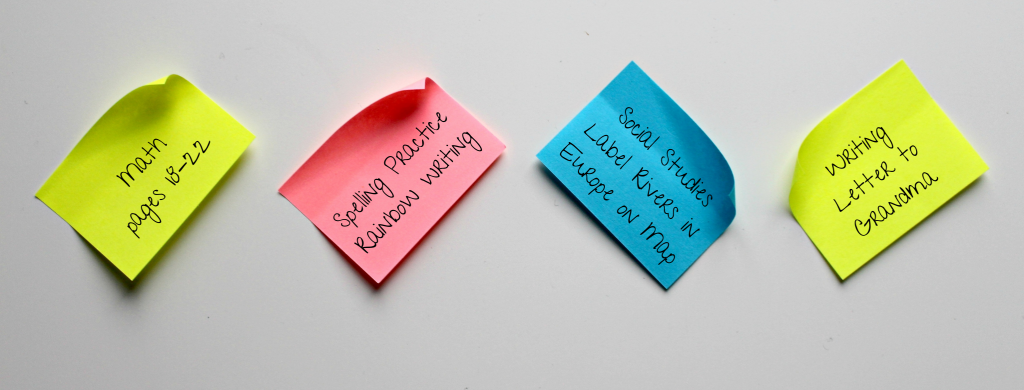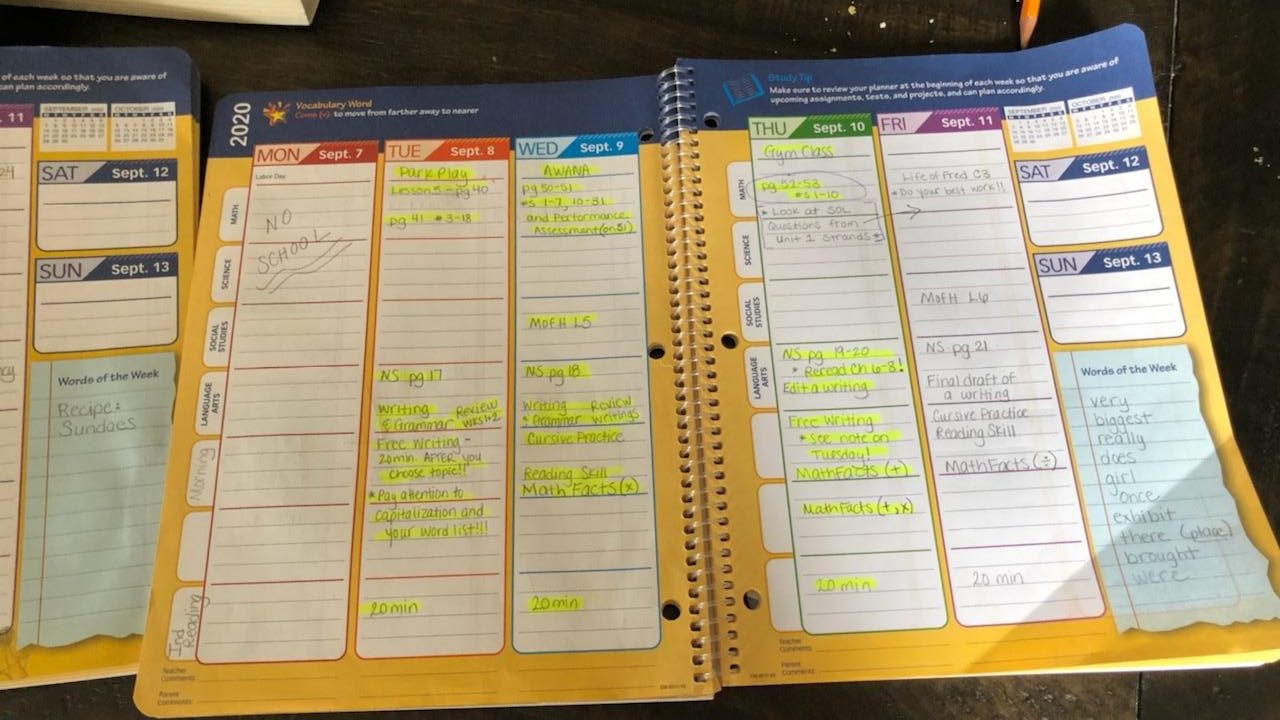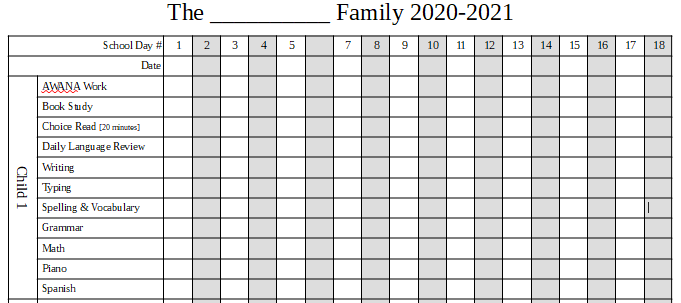
How many times did you hear “What do I have to do today?” or “How much more do I have to do?” today? If you’re here, I’m guessing that it is more times than you care to count. I wish I could say there is a one size fits all simple way that works for all families but as with most things homeschooling, there is no one right way. Below are five tried and true ways to help students know what they need to do each day or week.
- Trello – Trello is a free online management system. It is my favorite app / website for organizing lessons. I love how I can move things about freely and I do not have to tie anything to a particular date. When we set up our homeschool Trello board, we simple put the lessons in the order they are to be completed. Then as a boy finishes that particular assignment, he drags it to the archive space. Trello does take a bit of time to learn to set up but once it is complete, it rolls without much help. It also requires access to the app or website to change which is why at this point, it is mostly for me. I have worked with several families with children in late elementary school, middle school and high school that can’t imagine tracking assignments any other way since their children have personal devices.
- Student Planners / Day Planers – Remember those assignment notebooks that most of us who grew up during the nineties and early 2000s used religiously? Our schools thought that it was just not possible to learn well unless we had fancy planners with the school logo and every teacher checked that you had written the correct assignments down every day through middle school. Well, generic versions of that still exist and actually make sense for many homeschool families. Each afternoon or evening, the homeschool teacher writes down the assignments for the next day. Many even have a designated space for the week’s spelling or vocabulary words. While this method works well for those who don’t want to rely on technology, it can cause struggles for the adult who has to remember to write the assignments down each day, especially if there are several children in the family.

- Family Checklist – For families with several students, family checklists are an amazing way to keep track of what each person has to do and it is all in one place. This has been the best for our family once we had more than one child homeschooling. Each checklist lasts us several weeks and tracks not only individual assignments but also tracks our gathering [all together] activities / subjects. While some find checklists confusing since all the subjects are always listed, we have found that if we use a simple dash through the subjects that are not part of our day and check marks for those we complete it keeps us organized. I don’t usually give away a template of our checklist free but for those of you reading this, I’ll make an exception. To get your free copy of our family’s daily check list click here.

- Laminated Checklists – If your day consists of the same pieces / subjects each and every day, a simple checklist that you laminate and mark off with dry erase marker works great. If you are looking to make a pretty checklist, I recommend exploring Canva. It is a free design website with templates that can make a Pinterest worthy checklist in no time – watch out it is addicting. You can also check out this generic checklist.
- Magnetic Dry Erase Labels – We use these labels for about a million and one different things. One of my favorite uses is for some of our youngest children. They love to move the magnets from the front of the fridge to the side where we keep them until we need them again. Since our youngest doesn’t read well yet, we mostly use sketches and page numbers. For reading, I draw a book with the letters ABC on the front, for math a bunch of numbers , for Bible a cross and so forth. The physical act of moving things from one part of the fridge to another helps them learn to regulate their own learning and manage their own days.
While all these systems can help you to combat the constant questioning, nothing is going to work like magic. Each system takes training and time to implement. In the long run, the time it takes to teach your child how to use one of these systems is worth it. Not only because the number of questions greatly decreases but because you are in a practical way teaching your child to plan, think, organize and regulate his or her own time – a skill many adults still need to learn. So take some time today to choose a system from above or create one of your own. But no matter what you choose, keep it smart, keep it simple.
Recent Comments